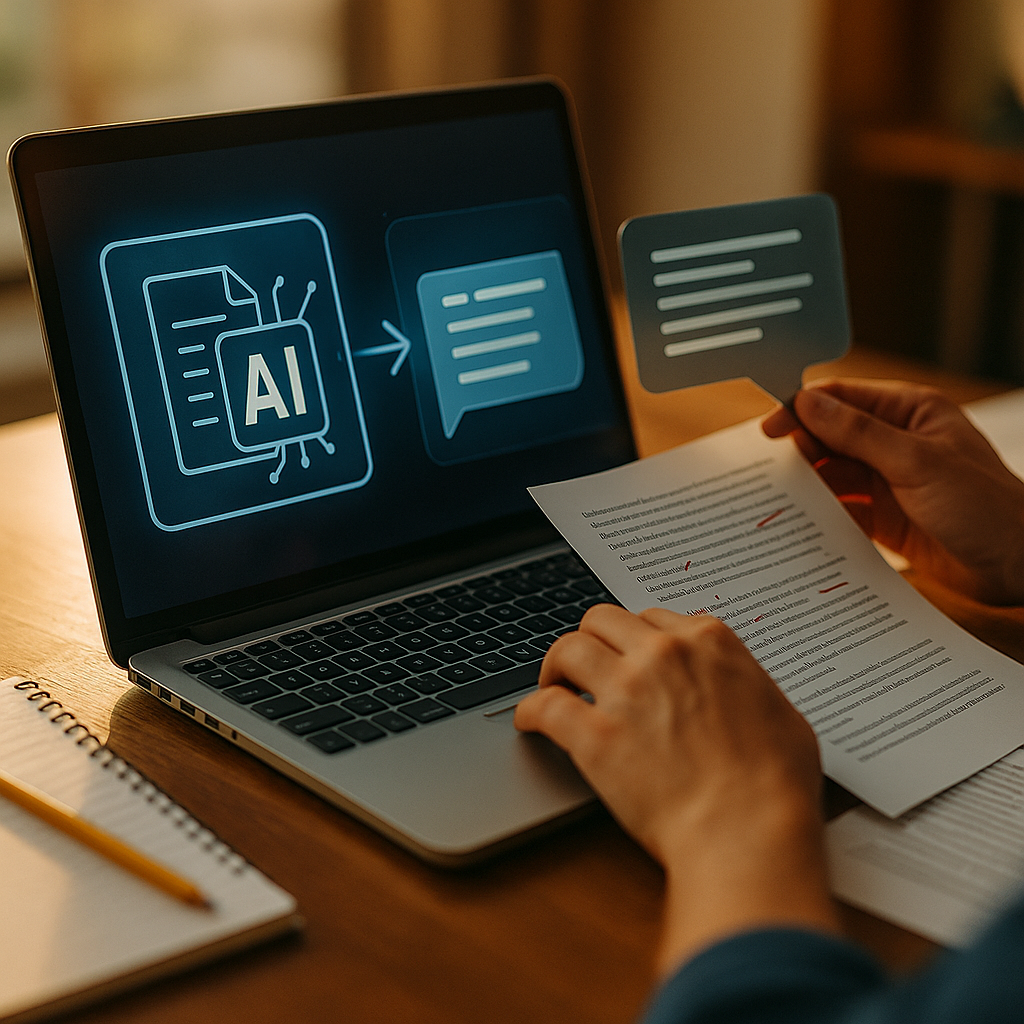Using AI to analyze and optimize your content for readability and clarity is not just a competitive edge—it’s now essential for content creators who want real engagement and results. Discover how today’s smartest AI tools can transform your writing, win your audience’s trust, and drive measurable improvements in content performance.
AI Content Analysis Tools for Enhanced Readability
In 2025, AI content analysis tools have evolved to provide lightning-fast assessments of your writing. These platforms, like Grammarly, Jasper, QuillBot, and newer entrants fueled by large language models, scan text and highlight issues affecting readability. They analyze:
- Sentence structure: Identifying unnecessary complexity or passive voice.
- Word choice: Flagging jargon, overused phrases, and ambiguous terms.
- Formatting: Recommending shorter paragraphs, lists, and clear headings.
By leveraging these AI insights, you get instant, data-driven feedback tailored to your target audience’s reading level, preferences, and even sector-specific nuances. This allows content teams to rapidly iterate and improve drafts before publication, ensuring your message connects effortlessly with readers.
Incorporating AI-powered suggestions not only streamlines editing but also maintains editorial consistency across web pages and platforms—an essential part of building trust and authority online.
Optimizing Content with AI for Clarity and Comprehension
Advanced AI algorithms are designed to spot more than surface-level issues: they detect ambiguous statements, convoluted flow, and potential misinterpretations. Tools equipped with natural language understanding can offer actionable suggestions including:
- Simplifying complex ideas: Breaking down technical or abstract concepts into easy-to-understand language.
- Identifying redundancies: Removing repetition and tightening word count without sacrificing depth.
- Clarifying intent: Ensuring every section supports your overall message and call to action.
By running your content through AI systems for clarity optimization, you minimize the risk of confusing your audience. The latest research published in the Journal of Digital Literacy (2025) highlights that websites using AI-clarified content see up to 25% higher engagement rates and reduced bounce rates—a direct benefit to SEO and user experience.
Improving SEO Performance with Readability Optimization
Google’s algorithms now reward content that demonstrates clear readability scores and user-centric language. AI-driven readability analysis assesses metrics such as Flesch-Kincaid scores, sentence variety, and paragraph density. Platforms like ClearScope and SurferSEO integrate readability data with keyword optimization, allowing you to:
- Align content with audience literacy levels for better inclusion and accessibility.
- Increase average dwell time by making articles more scannable.
- Elevate featured snippet eligibility by structuring answers and explanations intuitively.
As a result, AI-aided optimization doesn’t just improve human comprehension—it directly impacts ranking signals and enhances the discoverability of your content in 2025’s competitive SERPs.
Using AI to Personalize Content for Target Audiences
Personalization is a cornerstone of modern content strategy. Today’s AI-powered editing suites can analyze audience data—such as interests, device usage, and browsing patterns—and recommend tone, examples, and formatting tailored to specific personas. Key benefits include:
- Customizing complexity: Adapting content for beginners, intermediates, or experts based on readership analytics.
- Optimizing cultural relevance: Suggesting region-specific idioms, examples, or references.
- Dynamic keyword insertion: Seamlessly weaving trending terms relevant to your audience segments.
This ensures every visitor sees content that resonates, drives action, and meets Google’s Experience and Expertise criteria under EEAT (Experience, Expertise, Authoritativeness, Trustworthiness) guidelines.
Integrating AI with Human Creativity for Best Results
No AI tool can fully replicate human intuition, emotion, or nuanced storytelling. The most effective workflows combine AI’s speed with editorial insight. Here’s how high-achieving teams approach it in 2025:
- Draft with creativity: Writers focus on originality and authentic voice.
- Run AI analysis: Check for readability, clarity, inclusiveness, and SEO.
- Review collaboratively: Editors review AI suggestions, making selective adjustments that fit the brand’s ethos.
- Validate with user feedback: Analyze engagement metrics post-publication and iterate rapidly.
By viewing AI as a trusted partner—rather than a replacement—you maximize both efficiency and content quality, ensuring messages are both impactful and credible.
Ethical Considerations When Leveraging AI for Content
As AI becomes integral to content production, ethical use becomes critical. Always disclose when substantial portions of text are AI-generated, especially in sensitive topics. Use AI to augment, not replace, human judgement and editorial standards. Regularly update your content guidelines to reflect transparency in automation, aligning with Google’s ongoing EEAT focus on trustworthy, accountable content creation.
AI-driven tools—when blended with thoughtful strategy—unlock new levels of readability and clarity, fueling engagement and lasting SEO results. Embrace these advances, and make every word count.
FAQs About Using AI to Analyze and Optimize Content for Readability and Clarity
-
Can AI fully replace human editors?
AI greatly accelerates the editing process and reduces errors, but human judgment is irreplaceable for voice, tone, and final approval. The best outcomes come from AI-human collaboration.
-
What AI tools are best for content readability in 2025?
Top tools include Grammarly, Jasper, QuillBot, SurferSEO, and ClearScope, along with emerging LLM-powered platforms. Choose solutions that integrate with your content management system and offer advanced analytics.
-
Does AI optimization impact SEO directly?
Yes. AI helps align your content with Google’s latest algorithms, improving clarity, inclusivity, and readability—key factors in search rankings and featured snippet performance.
-
Is AI-generated content still trustworthy for readers?
AI can enhance trustworthiness by eliminating ambiguity and inconsistency. However, it’s crucial to maintain human editorial oversight and transparency about AI involvement—especially on authoritative or sensitive topics.
-
How often should I analyze and optimize my content with AI?
Best practice is to analyze both new and legacy content quarterly or whenever Google updates its guidelines. Routine optimization keeps your content relevant, accessible, and competitive.
